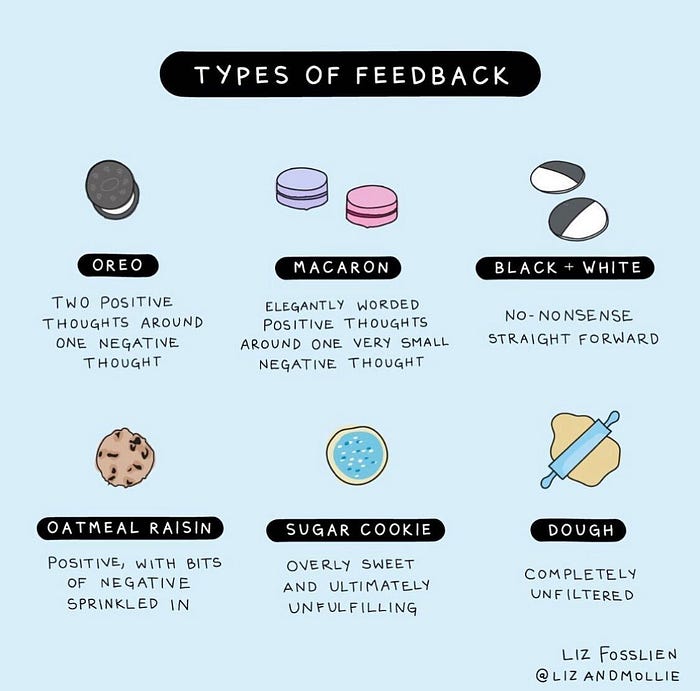Member-only story
Giving, seeking, and receiving feedback in UX
Each individual is a universe of its own and each company or UX department has a set of unwritten rules. When you’re in doubt, the following checklist can guide you as you start navigating the muddy waters of the feedback world.

3 weeks after joining Glovo, I saw a message in a Slack channel that’s exclusively created for seeking feedback amongst the UX Research team. Two of my colleagues were asking for input to their work for co-creating the product vision (see our case study HERE by our brilliant Valentina Salvi and Mariana Itza de Miguel).
Excited about this project, and keen to contribute to its quality standards by checking for consistency, accuracy, and simplicity, I posted my comments on the Miro board.
Hours after I submitted my feedback, Mariana told me that some parts of my feedback were located in sections(s) that were drafted by Joana, our Product Director (the head of Product Managers for Glovo customer app).
That was unexpected. My comments were respectful, but were they a bit too direct? Have I risked my job, soon after my arrival to a new company, by giving feedback to someone who was way more senior than me?
Luckily, Joana was unperturbed. She genuinely considered all my feedback, iterated on some details, and kept others while giving me her reasoning.
It was one of those occasions — still rare in UX & Product teams according to my experience — where the feedback was given openly, received with curiosity, and helped serve for better outcomes. But you and I both know that we’re not always that lucky.
🙈 What can go wrong?
In the field of UX, there still seems to be fear when giving constructive feedback:
- “What if they think I’m stupid for raising this point?”
- “What if my colleague gets offended?”
- “What if our relationship/collaboration gets broken after I openly give feedback?
Similarly, seeking feedback can be scary because we don’t know what kind of reactions we will get




